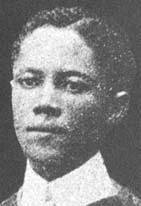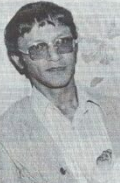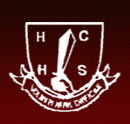
The University of the Witwatersrand, Johannesburg, is a multi-campus South African public research university situated in the northern areas of central Johannesburg. It is more commonly known as Wits University or Wits. The university has its roots in the mining industry, as do Johannesburg and the Witwatersrand in general. Founded in 1896 as the South African School of Mines in Kimberley, it is the third oldest South African university in continuous operation.

The University of Cape Town (UCT) is a public research university in Cape Town, South Africa. Established in 1829 as the South African College, it was granted full university status in 1918, making it the oldest university in South Africa and the oldest university in Sub-Saharan Africa in continuous operation.

Mamphela Aletta Ramphele is a South African politician, anti-apartheid] activist, medical doctor and businesswoman. She was a partner of anti-apartheid activist Steve Biko, with whom she had two children. She is a former vice-chancellor at the University of Cape Town and a former managing director at the World Bank. Ramphele founded political party Agang South Africa in February 2013 but withdrew from politics in July 2014. Since 2018, she has been the co-president of the Club of Rome

District Six is a former inner-city residential area in Cape Town, South Africa. Over 60,000 of its inhabitants were forcibly removed during the 1970s by the apartheid regime.
Clements Kadalie was born Lameck Koniwaka Kadali Muwamba in Nyasaland. At age sixteen, he was a qualified teacher. He later settled in Cape Town, South Africa where he became South Africa's first black national trade union leader.

Observatory is a suburb in Cape Town, South Africa, colloquially known as Obs. Bordered by Mowbray to the south and Salt River to the northwest, the area is best known as a student neighbourhood associated with the nearby University of Cape Town and Groote Schuur Hospital. It takes its name from the South African Astronomical Observatory headquarters, built in 1829 by the Royal Observatory.

Alexander Sinton Secondary School, also known as Alexander Sinton High School, is an English-medium school in Athlone, a suburb of Cape Town, South Africa. The school is located in the Cape Flats, an area designated as non-white under the Group Areas Act during apartheid. The school was involved in the anti-apartheid student uprisings of the 1970s and 1980s. Staff and students at the school made headlines when they barricaded the police into their school in September 1985. The following month, three youths were killed near the school by police officers who opened fire on protesters in the Trojan Horse Incident. It was the first school to be visited by Nelson Mandela after his release from prison. As of 2014, the school has 1,100 pupils, half boys and half girls. The school employs 40 teachers and six non-teaching staff.
The African People's Organisation (APO), also known by its original name African Political Organisation was a Coloured political organisation in early-20th-century South Africa. Founded in Cape Town in 1902, the organisation rallied South African Coloureds against the South Africa Act 1909.
Nova Hreod Academy is a mixed secondary school with academy status, located in Swindon, Wiltshire for students aged 11 to 16.
Zainunnisa "Cissie" Gool was an anti-apartheid political and civil rights leader in South Africa. She was the daughter of prominent physician and politician Abdullah Abdurahman and mother Helen Potter James. Gool founded the National Liberation League and helped to create the Non-European United Front (NEUF). She was known and loved as the "Jewel of District Six" and "Joan of Arc" by South Africans as a champion of the poor.
The following is a timeline of the history of Cape Town in the Western Cape province of South Africa.

Rahima Moosa was a member of the Transvaal Indian Congress and later the African National Congress. She is well known for the role she played in the national uprising of women on 9 August 1956. Moosa was also a shop steward for the Cape Town Food and Canning Workers Union.

Trafalgar High School is a public English medium co-educational secondary school in District Six of Cape Town in South Africa. It was the first school built in Cape Town for coloured and black students. The school took a leading role in protesting against apartheid policies. It celebrated its centenary in 2012 and is still running and was recently declared a heritage site.

Harold Cressy was a South African headteacher and activist. He was the first Coloured person to gain a degree in South Africa and he worked to improve education for non-white South Africans. He co-founded a teachers group which opposed the apartheid Bantu Education Act.

Tafelberg School is an English medium Grade 1–12 public school in Bothasig, Cape Town, South Africa which offers remedial activities for children with special learning needs. The school was located in Sea Point before mid–2010. As of 2014, the school accommodates its full capacity of 400 students.
Rhoda Kadalie was a South African academic. She was the founder of the Gender Equity Unit at University of Western Cape (UWC). In June 1999 she received an honorary doctorate from the Faculty of Social Sciences of Uppsala University, Sweden. She was the granddaughter of trade unionist Clements Kadalie.
The Teachers' League of South Africa (TLSA) was an organization for coloured teachers founded in Cape Town in June of 1913. The group, while originally focused on issues surrounding education, became increasingly political in the mid-1940s and started to agitate against apartheid. Due to state suppression, the group became defunct in 1963.

Mogamad Ganief Ebrahim Hendricks is a South African politician, businessman, lecturer and teacher who is a Member of the National Assembly of South Africa. He became an MP on 22 May 2019. He is the founder and current leader of Al Jama-ah, a party for upholding Muslim interests in South Africa. Hendricks was previously a City of Cape Town municipal councillor.

Sedick Isaacs was a South African anti-Apartheid activist, physician, professor, and author.















